A&P Mini Practical 5 - Axial Skeleton: Hyoid, Vertebrae, Sacrum, Thoracic Cage
1/63
There's no tags or description
Looks like no tags are added yet.
Name | Mastery | Learn | Test | Matching | Spaced |
|---|
No study sessions yet.
64 Terms
Hyoid bone
Hangs high in neck, floats
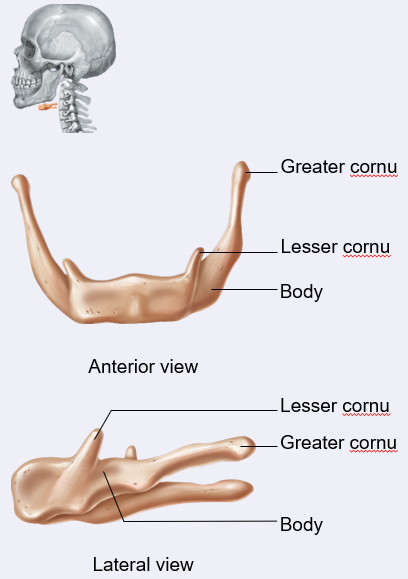
Cervical
7 vertebrae, anterior, bends inward toward front
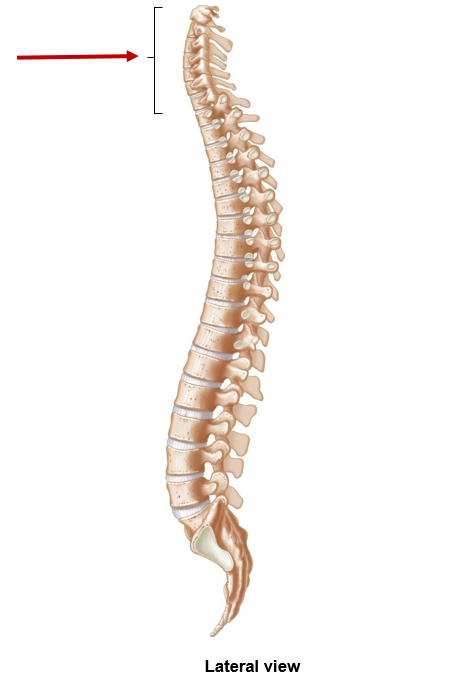
Thoracic
12 vertebrae, posterior, curves outward toward back
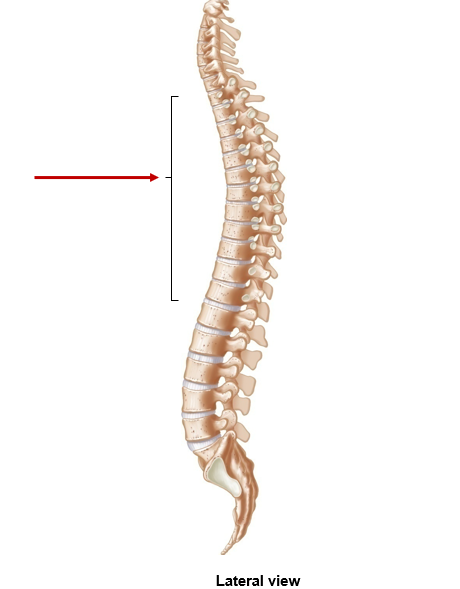
Lumbar
5 vertebrae, anterior, curves inward toward front
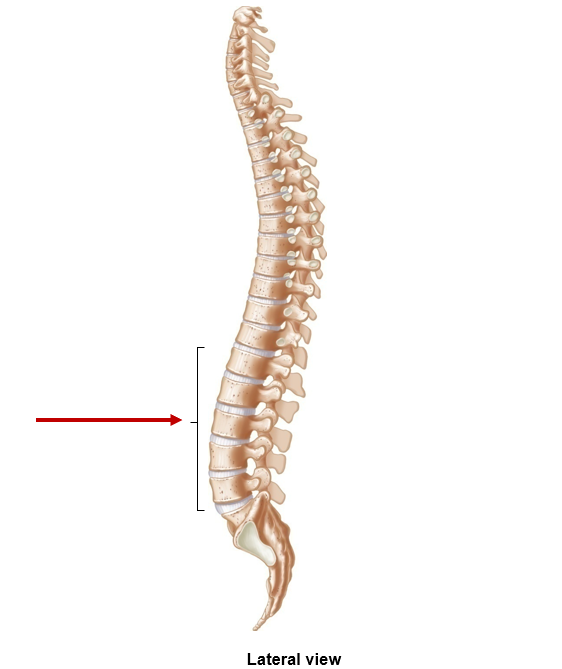
Sacrum
5 fused vertebrae (1 bone), posterior, curves outward toward back
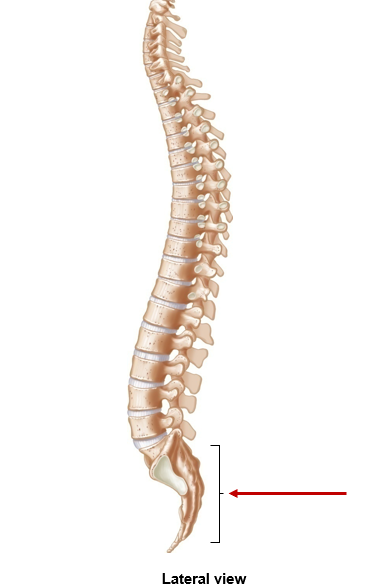
Coccyx
1-4 fused bones (1 bone), posterior, curves inward toward front
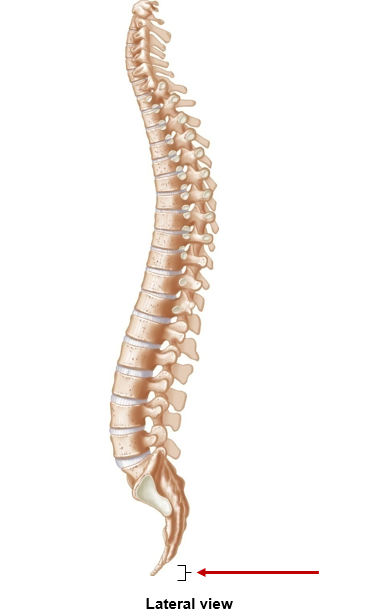
Cervical curvature
Lordosis, convex anteriorly, curves forward

Thoracic curvature
Kyphosis, concave anteriorly, curves outward
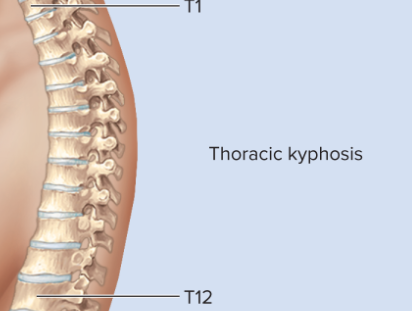
Lumbar curvature
Lordosis, convex anteriorly, curves forward
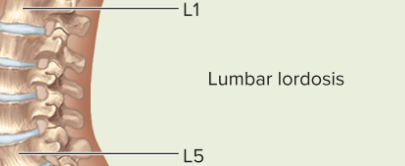
Pelvic curvature
Kyphosis, concave anteriorly, curves outward

Scoliosis
Lateral (S shape, side-to-side), thoracic region
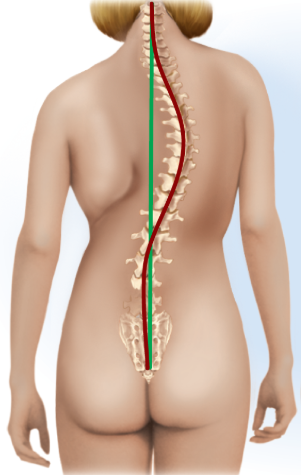
Kyphosis
Exaggeration of thoracic curvature, overly rounded (shrimp posture)
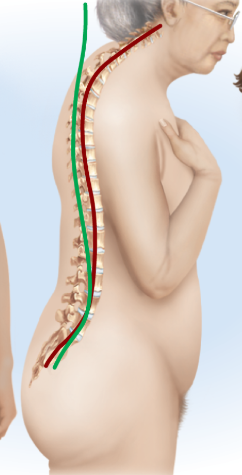
Lordosis
Exaggeration of lumbar curvature, too far forward
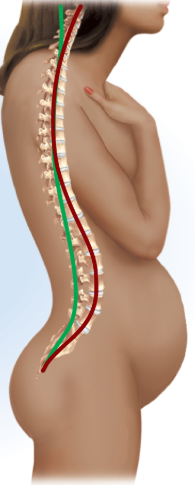
Body/Centrum
Disk-shaped, largest part
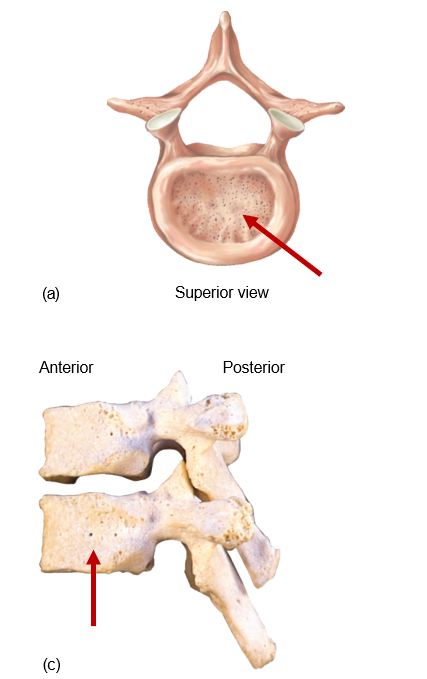
Laminae
Posterior part of arch, bridge for spinous process
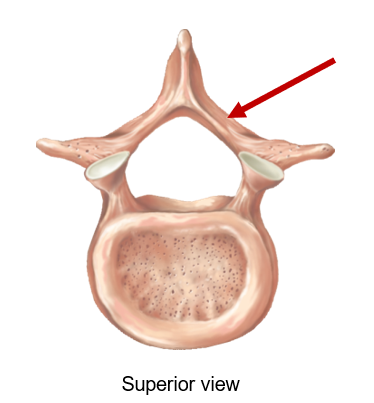
Pedicles
Feet of arch, little pillars, short thick bridges
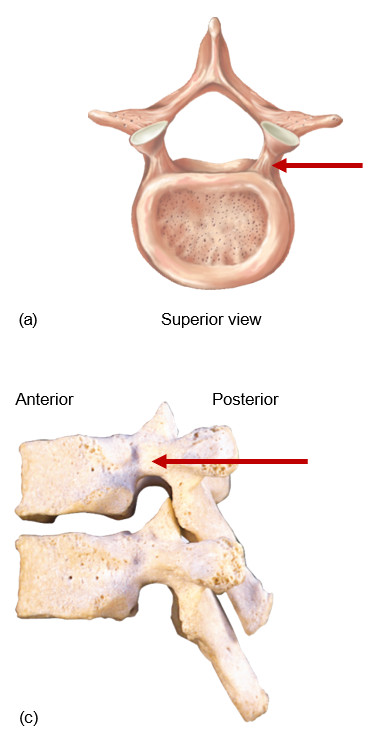
Spinous Process
Pointy part, sticks out posteriorly, where 2 laminae join, can feel it
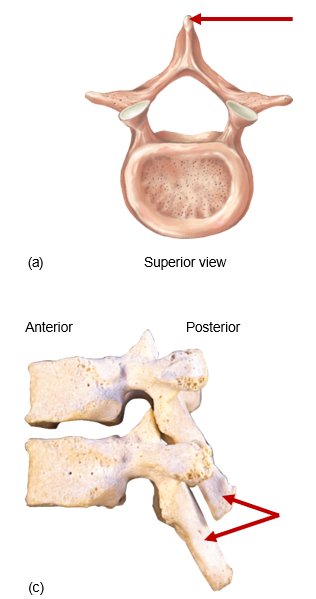
Transverse Process
Side wings, projections that stick out laterally
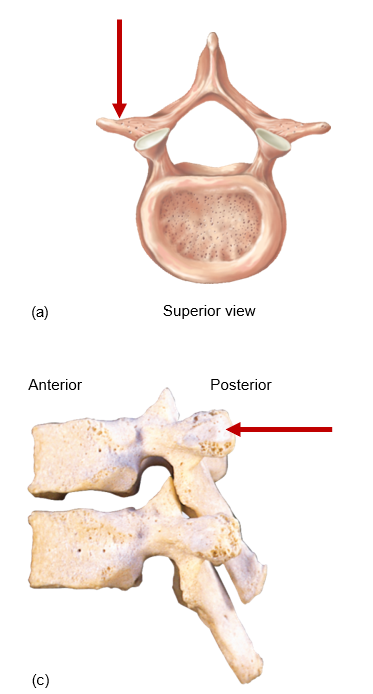
Superior/Inferior Articular Processes
Joint connectors
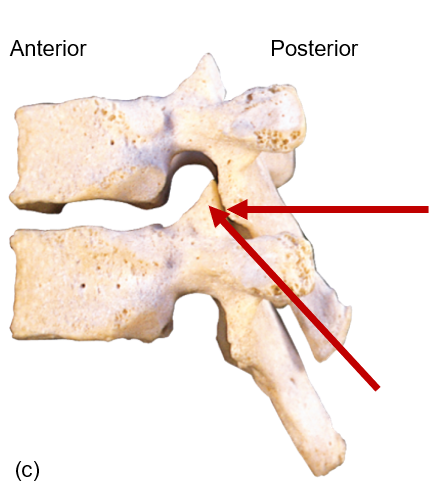
Superior Articular Process
Faces upward

Inferior Articular Process
Faces downward
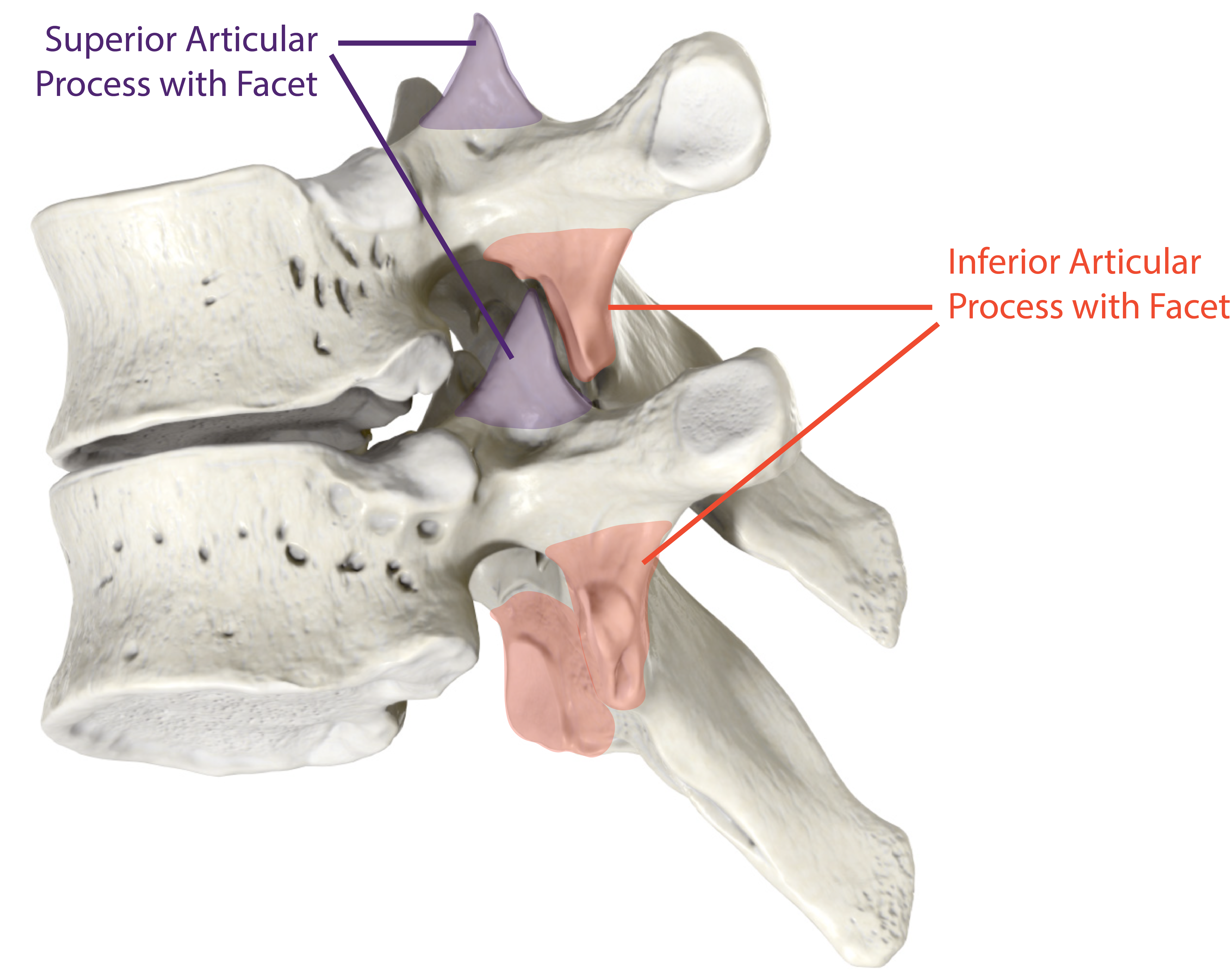
Vertebral Foramen
Hole in center where spinal cord runs through
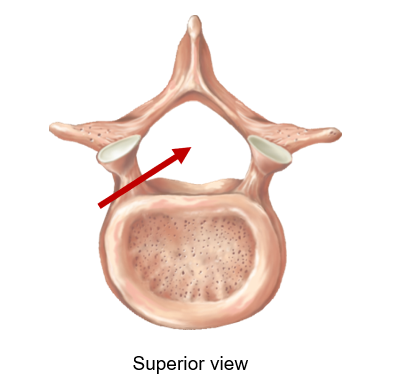
Features of Cervical (7)
Support head, allow for movement
C1: Atlas
C2: Axis
Dens (Odontoid) Process
Bifid spinous process
Transverse foramen

C1: Atlas
1st, Atlas held up the world (holds skull)

C2: Axis
2nd, lets head rotate/spin around

Dens (Odontoid) Process
Tooth-like projection

Bifid spinous process
C2-C6, split/forked (2 projections)

Transverse foramen
Only in cervical, hole in transverse process
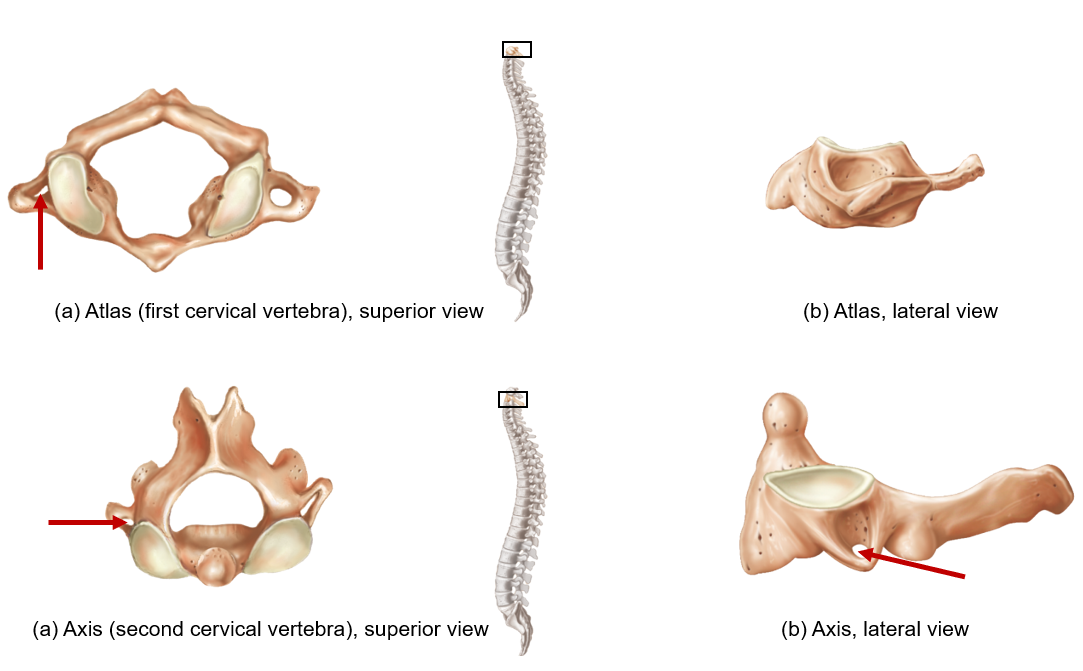
Features of Thoracic (12)
Supports rib cage, protects heart & lungs
Sharp downward spinous process
Superior/Inferior/Transverse Costal Facet
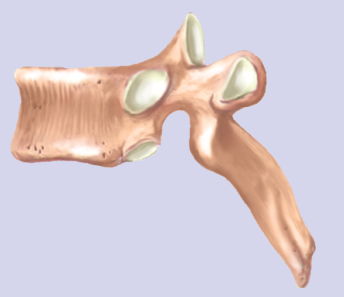
Sharp downward spinous process
Long, downward, shark tooth
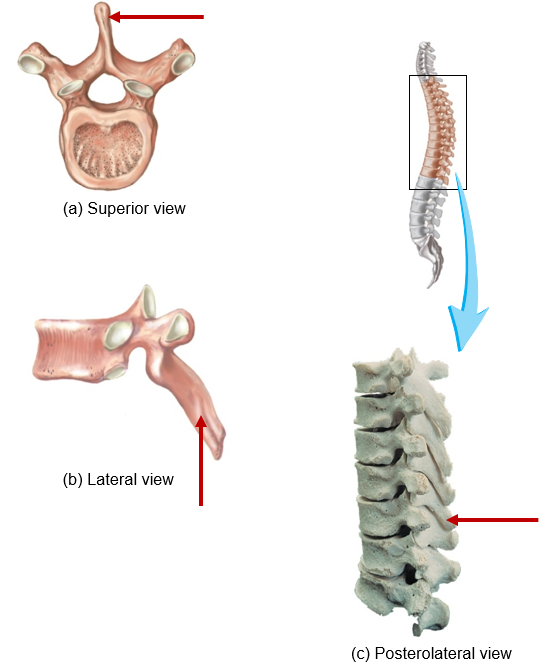
Superior Costal Facet
Top side of body
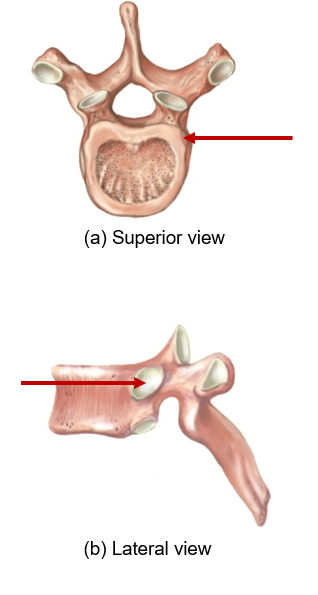
Inferior Costal Facet
Bottom side of body

Transverse Costal Facet
On transverse process
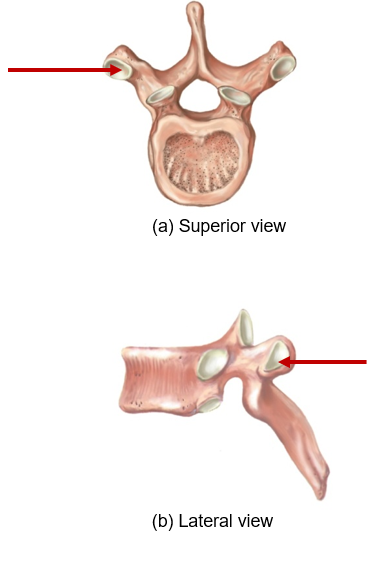
Features of Lumbar (5)
Bears most weight, supports lower back
Massive Centrum (Body)
Short/wide spinous process
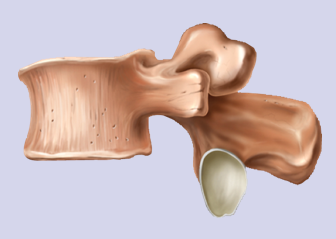
Massive Centrum (Body)
Large, thick because supports weight

Short/wide spinous process
Squarish for flexibility, movement, strength
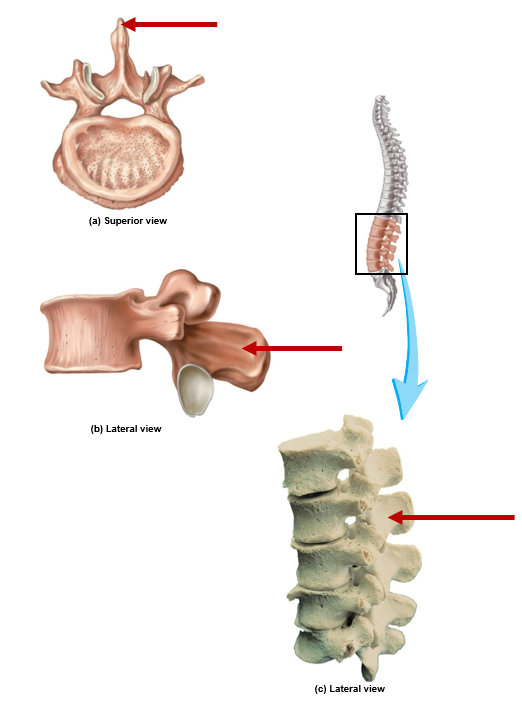
Features of intervertebral disc
Shock absorber
Nucleus pulposus
Anulus fibrosus

Nucleus pulposus
Internal, gel-like core, shock absorber

Anulus Fibrosus
External, tougher ring, strength
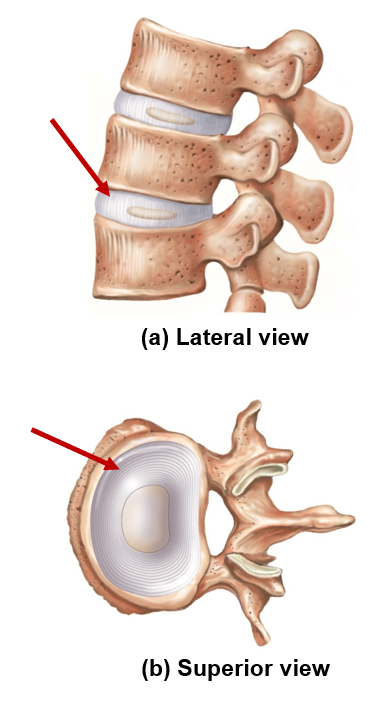
Features of Sacrum (5)
Connects spine to pelvis, supports body weight
Sacral Canal
Sacroiliac joint
Sacral Foramen
Median Sacral Crest
Sacral Promontory
Ala
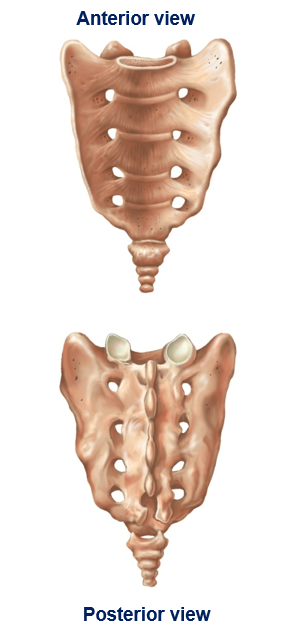
Sacral canal
Tunnel in middle of sacrum
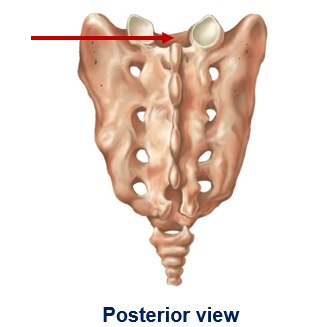
Sacroiliac joint
Where sacrum meets ilium
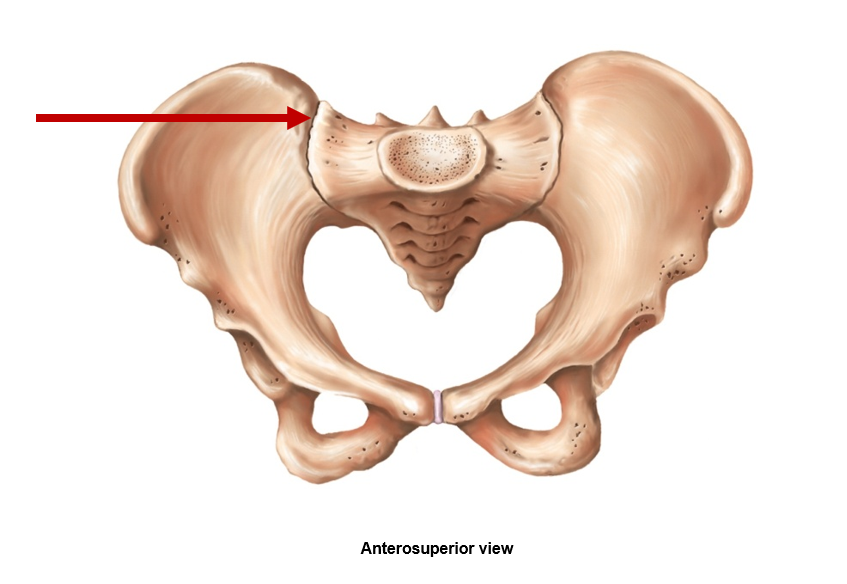
Sacral Foramen
4 each side, 8 total, exit holes on anterior and posterior surface
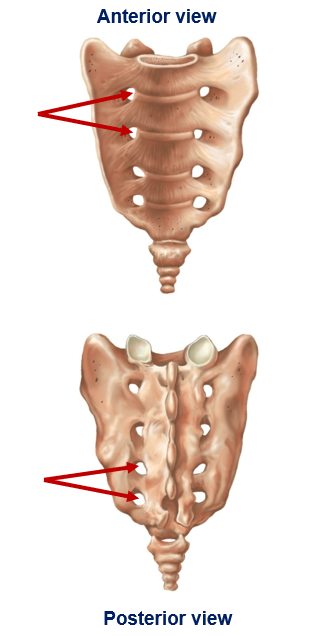
Median Sacral Crest
Bumpy ridge that runs down middle of posterior side
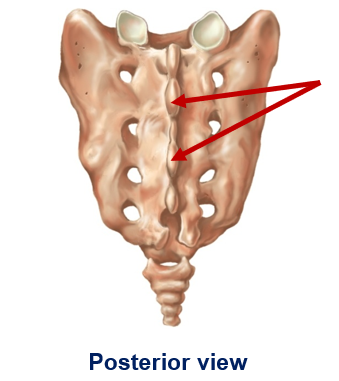
Sacral Promontory
Sticks out at top of sacrum
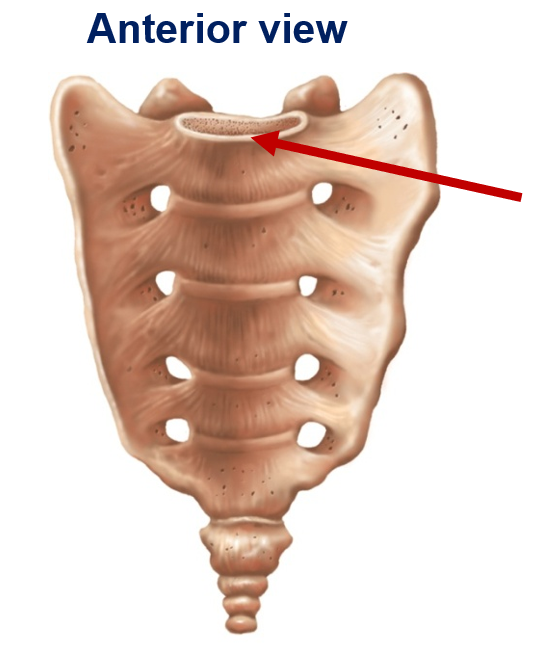
Ala
Two broad, wing-like projections on superior lateral portion
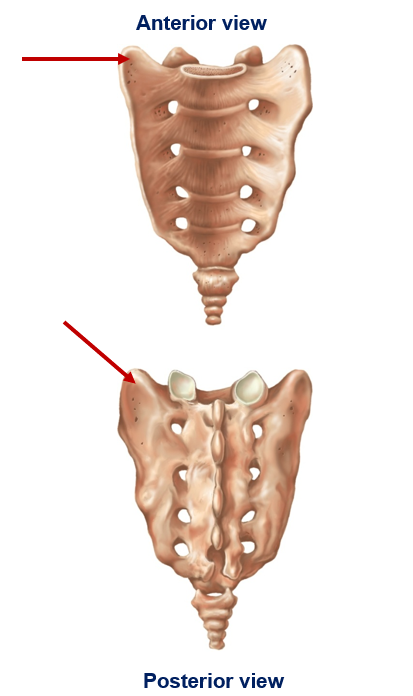
Features of Coccyx (1-4)
Supports sitting posture, muscle attachment
Tailbone (tail-end of spine)
Smallest part of vertebral column
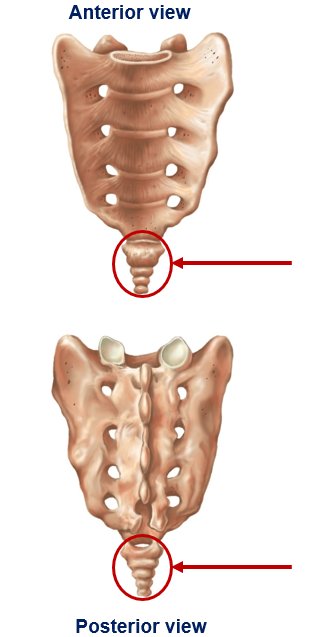
Features of Sternum
Breastbone, protects vital organs, aids in breathing
Manubrium
Body
Xiphoid process
Clavicular notch
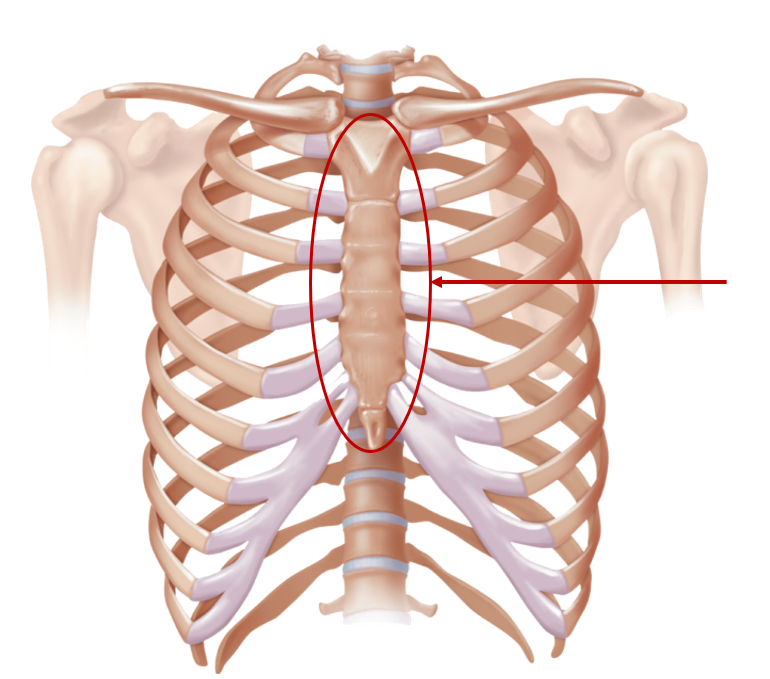
Manubrium
Top, upper portion, broad, articulates w/ clavicles
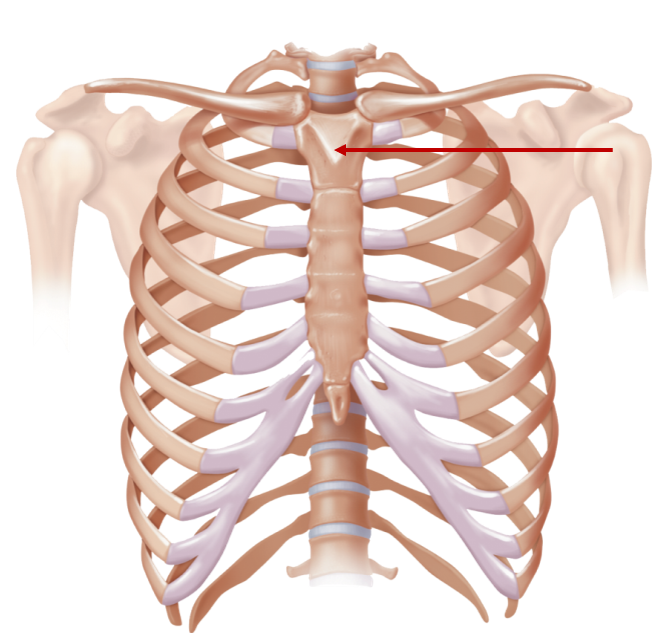
Body
Middle, longest part of sternum
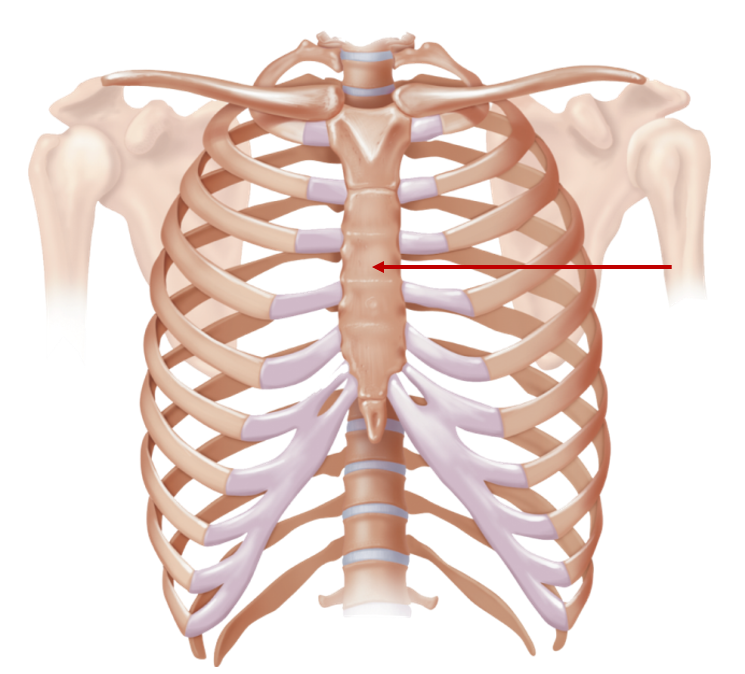
Xiphoid process
Bottom part, small, pointed structure at lower end of sternum
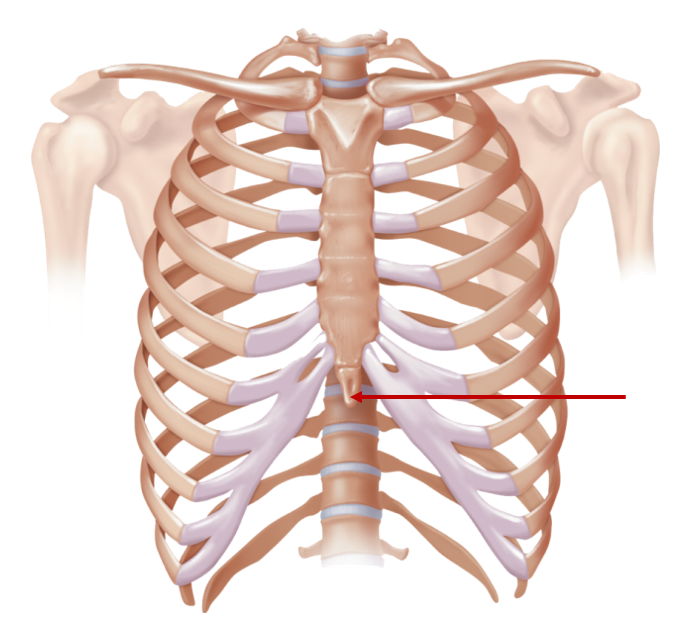
Clavicular notch
At sides of manubrium, where clavicles attach to sternum
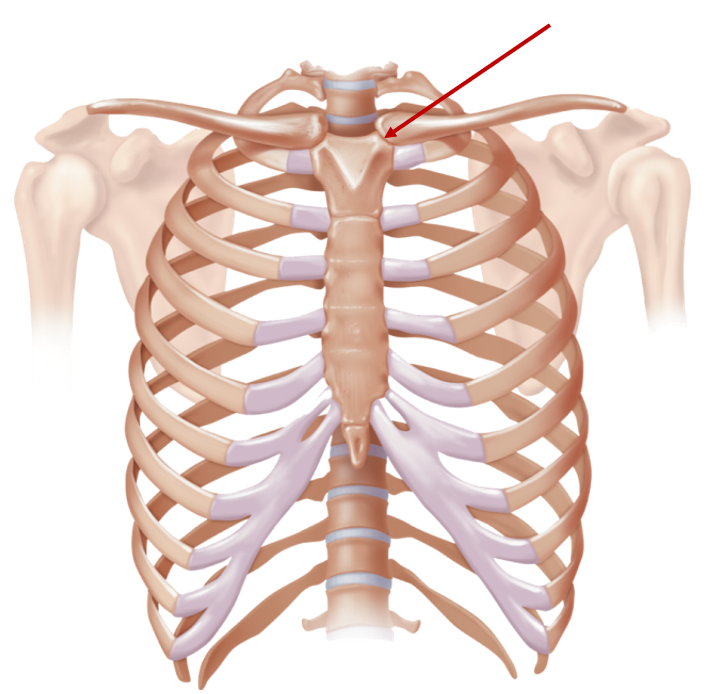
True ribs (1-7)
Attached directly to sternum via individual costal cartilages
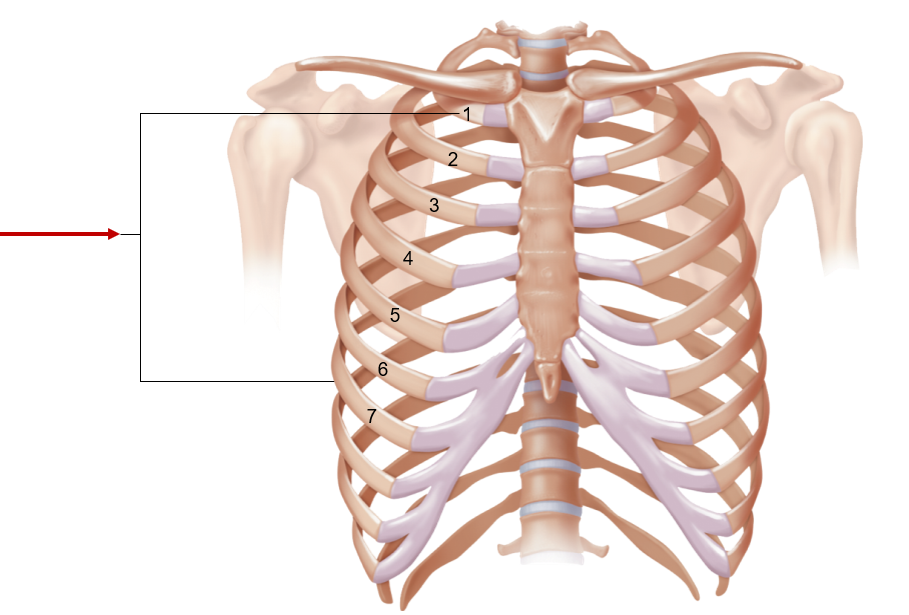
False - Vertebrochondral Ribs (8-10)
Indirectly attached to sternum by common cartilage
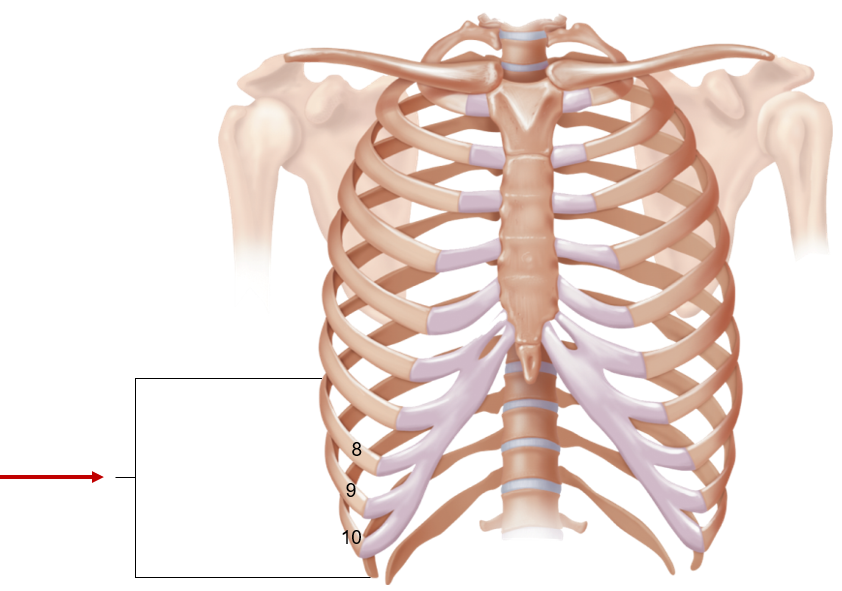
False - Floating Ribs (11-12)
Don’t attach to sternum, no cartilage
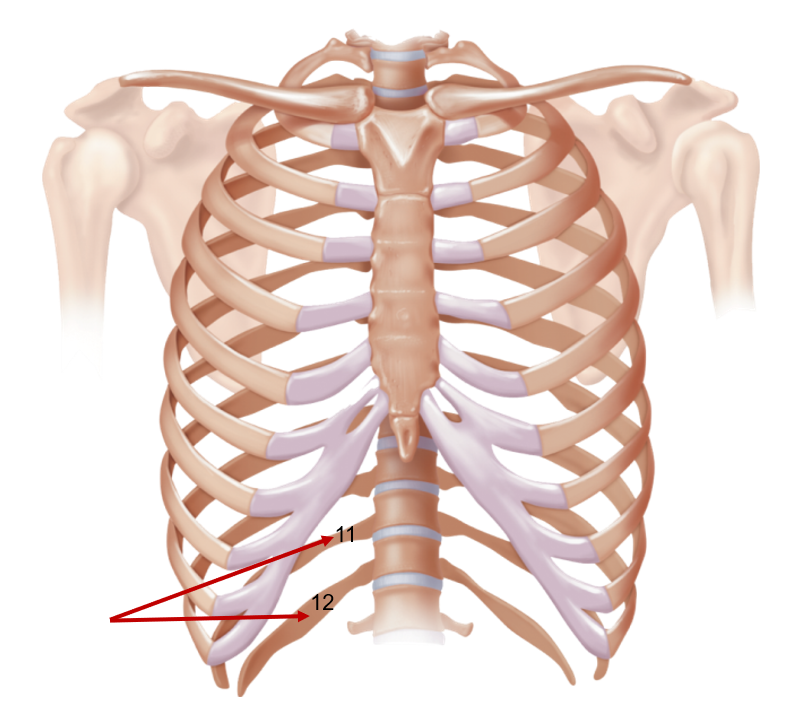
Rib 1
Head, Neck, Tubercle, shaft
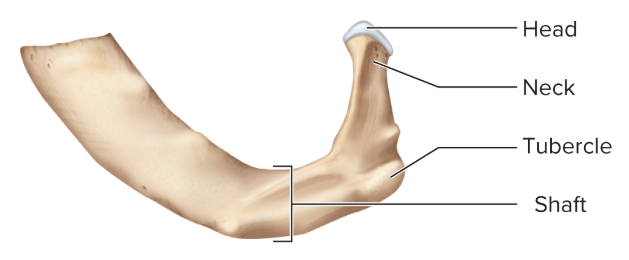
Head
Rounded end, articulates w/ vertebral body
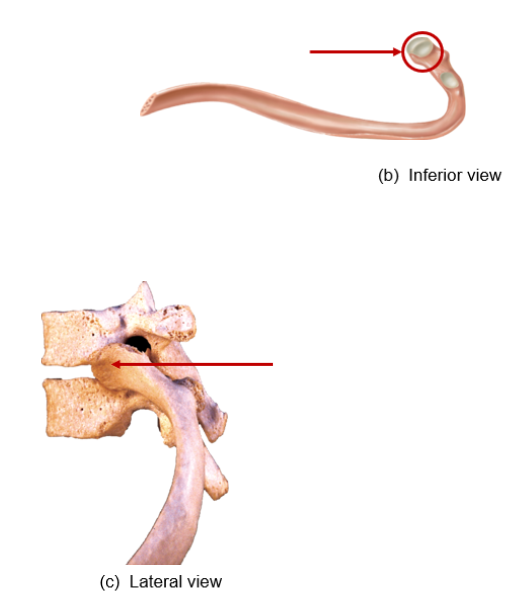
Neck
Narrow portion after head
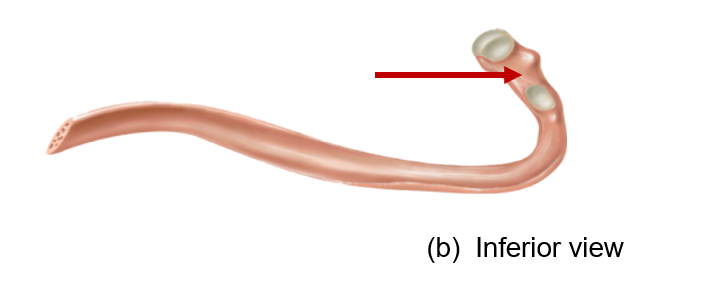
Tubercle
Small bump, articulates w/ transverse process
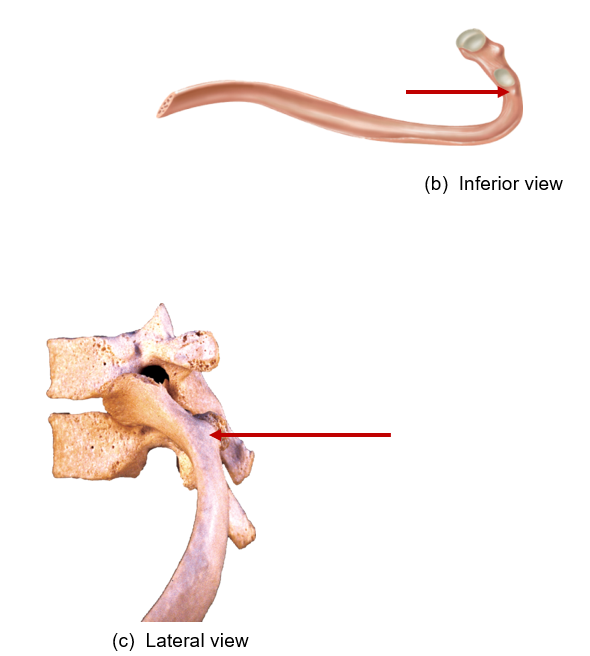
Shaft (main body)
Long, curved portion, attaches to costal cartilage
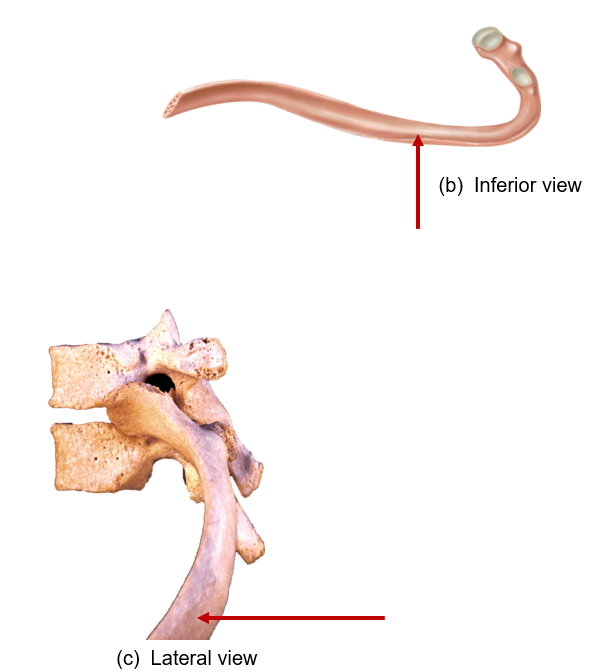
Ribs 2-10
Articular Facets, Costal Groove
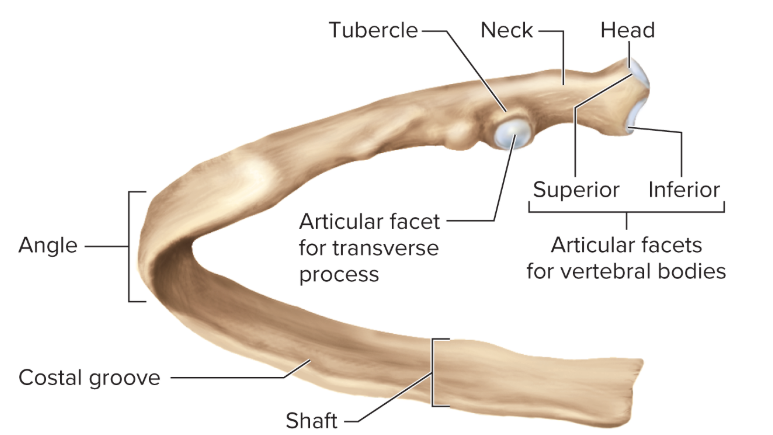
Articular Facets (2)
Flat surfaces where rib connects to vertebrae
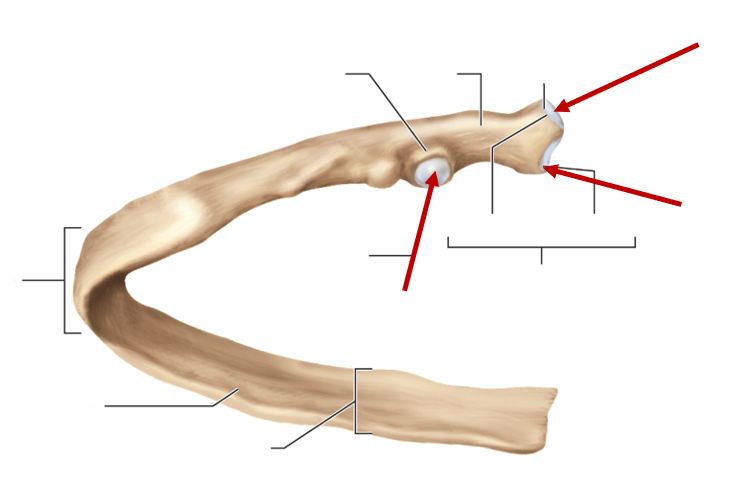
Costal Groove (1)
Groove along inside surface of rib
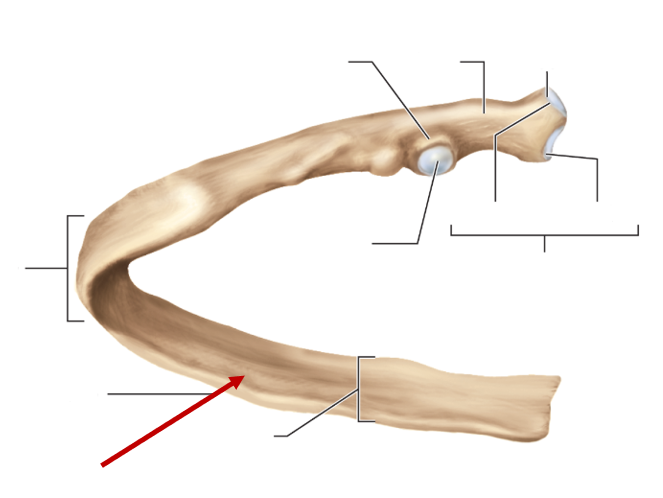
Ribs 11-12 (Floating)
Has all the parts of the rest of the ribs except the shaft
Doesn’t connect to costal cartilage or sternum (hence “floating”)
No articular facets or costal groove
